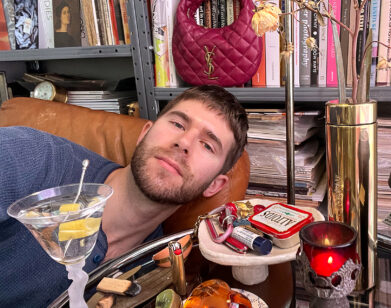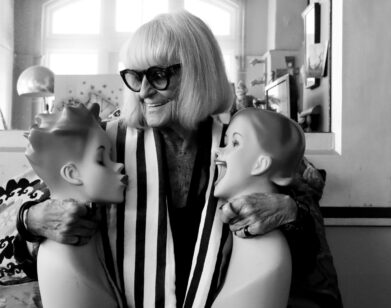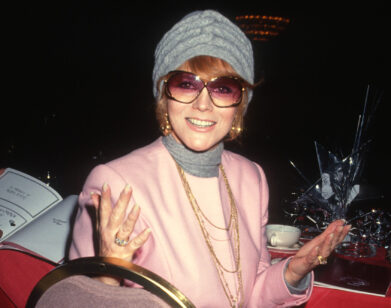Don Winslow and America’s Drug Problem

ABOVE: DON WINSLOW. PHOTO COURTESY OF RICK LOOMIS.
Drugs and crime syndicates are often at the center of Don Winslow’s novels. The protagonists of Savages (2010) and its prequel The Kings of Cool (2012) are privileged California dudes—a botanist with pacifist tendencies and his best friend, a non-pacifist Navy SEAL—who run a marijuana business. The Power of the Dog, Winslow’s breakout 2005 novel, revolves around a half-Mexican, half-American DEA agent named Arturo Keller and his friend-turned-nemesis, the drug lord Adán Barrera. 2006’s The Winter of Frankie Machine follows a former mafia hitman in San Diego. The Cartel, Winslow’s latest book, out today, is a sequel to Dog, bringing Arturo and Adán through the last 10 years of the war on drugs and its ever-escalating violence. It is brutal, graphic, and well-researched, with many of the more gruesome acts based on real events.
But there is something else that characterizes Winslow’s work. Beyond genre, there is musicality to his prose; staccato sentences that draw the reader in immediately: “Keller thinks he hears a baby cry,” begins Cartel. “Fuck you,” opens Savages. “I was learning a lot from jazz musicians like Sonny Stitt about pushing downbeat, getting certain moments on or two beats ahead of the reader,” the 61-year-old Rhode Island native explains. “Savages and The Kings of Cool were sort of like playing jazz—I’ll lay down a few basic chords, but most of it is going to be me riffing,” he continues. “I do that a little bit in Cartel when I want to shock or surprise—I’ll go back to the Sonny Stitt thing of setting you up for da, da, da, da and then go da-da so that it hits, it bangs.”
EMMA BROWN: When did you decide that you wanted to revisit the characters from The Power of the Dog? Was it because of the characters or because of developments in the war on drugs?
DON WINSLOW: Door number two. I was very reluctant to write this book. When it was first broached to me, I think I hung up the phone. I don’t have a moment in time in mind where I made that decision. It sort of crept up on me. But it definitely was not so much about the characters; although they’re the spine of the story, it was the developments in Mexico. It was a feeling of sitting on the sidelines when I shouldn’t be.
BROWN: Who was the person who called you with the idea?
WINSLOW: Shane Salerno, whom I work with on films and other things. He called and said, “What would you think about doing a follow up to Dog?”
BROWN: The characters in The Cartel go through some pretty horrific, brutal experiences. Was there ever a moment where you felt, “I can’t face doing this to a character I’ve created”?
WINSLOW: Yeah, maybe 20 of those moments. A lot of these people are drawn from real life characters and a lot of these incidents that you allude to are sadly true. I don’t think I have made up or created any of the violence in either of these books. My editor used to say—I’d get these notes—”That’s over the top isn’t it?” I had the same boring response: “I agree but it is the truth. This is what happened.” So yeah, there were moments in writing this when you just didn’t want to. And I was always edgy about lapsing into a pornography of violence—how do you write these things so that they are real and have impact but they are not just voyeuristic?
BROWN: The higher powers—the American government, the Mexican government, and eventually Art—have this philosophy of, “There is always going to be a drug trade and a drug cartel, it might as well be our drug cartel.” Do you believe in that theory—the lesser of two evils?
WINSLOW: Absolutely. I think that that is exactly what happened and I am not sure I blame them. A hundred thousand deaths give or take—nobody really knows. Twenty-two thousand people missing. For a problem that’s not, at the end of the day, yours. There is now a domestic drug market in Mexico. There wasn’t one when all of this began.
BROWN: Has it changed the way that you see recreational drugs?
WINSLOW: Absolutely, it has. Rates of addiction, if you study them over the years to the extent that we have accurate figures, don’t change much. There are some spikes, [but] for the most part you could even that number out. It’s roughly the same percentage. It’s true of drugs, alcohol, or any of the substance abuse issues. But recreational use is more varied and it is a huge market. I ask people all the time and people get angry with me about it. I say, “Look you are so particular about the kind of coffee you like, the kind of chicken you’ll eat at a restaurant, is it organic or is it free range? Was it free trade coffee?”
BROWN: There’s no such thing as fair trade cocaine.
WINSLOW: Or marijuana. The largest business the cartels do is still marijuana. So when you go to that party or you go home to relax and you want a little weed, you have to confront the reality that there is a really good chance that it has blood all over it. You are not going to go down and talk to the cartels about fair trade, about labor practices of people they rape and slaughter. Everybody tells you the same thing when you bring this issue up: “Oh, I know where mine comes from. It comes from Bobby who grows it in his windowsill or in his back bedroom.” And I say, “Okay, but there are tractors, trailers, trucks by the thousands coming across those bridges carrying marijuana and somebody is buying that. Your buddy Bobby cannot be supplying all of Seattle. It’s just not possible.” It’s not the marijuana that I have a problem with per se. It’s the production and delivery. I wish people were more aware. Like a lot of things, it is in the abstract for most people, but if you went and met some of these folks then I don’t think you’d want to participate. The Zetas for instance, one of the cartels, takes people—Central American immigrants mostly—who are coming up in buses and trains to find work in Mexico and United States and they kidnap them by the dozens or hundreds and kill them or put them to work on marijuana plantations. I’d like somebody who is smoking this dope to look one of those women in the eye and say, “It’s fun.”
BROWN: What made you interested in the Mexican drug trade in the first place? How did you start The Power of the Dog?
WINSLOW: I never set out to write either of these books. I think sometimes you tell the story and sometimes the story tells you. I was living where I live now, fairly close to the border in California and 19 innocent people—mostly women and children—were lined up against the wall and machine-gunned by the local cartel in a town I used to go to for cheap weekends. I knew nothing about the drug trade at that point. You’d see it around; you’d see narcos and narco trafficantes in San Diego and La Jolla sometimes. There were places that maybe you had to be careful about going or not going. But for the most part, I knew nothing. But I wanted to know, how does anything get to the point where someone is psychologically able to do that? That incident wouldn’t make the papers today. The worst thing that I wrote about in The Power of the Dog, they’d be back page stories in the era of The Cartel. When I finished Dog, I was really wrung out. Everyone in my house was glad my book was done. But when I started to read about this and find about how these cartels have evolved and what America’s role in it was, I just got angry.
BROWN: Has that ever happened with any of your other novels, where the story tells you?
WINSLOW: No. You get involved with everything that you write, but these two were particularly compelling and obsessive in ways that are maybe not so healthy. I don’t know I can recommend it to somebody. But these two I think are pretty unique for me.
BROWN: Is there a difference in what you want someone to get out of Dog and The Cartel than what you want someone to get out of a novel like Savages?
WINSLOW: Sure. Savages and The Kings of Cool are as much about language as they are about the story—I wanted to take that culture and write it in that language. Kings is a little bit more historical; I was trying to explain, “How did this culture happen,” but it was more about language and character. They were kind of subversive; I was trying to break out of what I felt were constrictions that were being put on the crime fiction genre. With Dog and Cartel, I wanted to tell the story of 45 years of the war on drugs and felt that it was important for people to understand the story behind these headlines. I was much more intent on story than style.
BROWN: Do you read sentences aloud?
WINSLOW: Yes. With a 660-page book, you don’t read every sentence aloud. I am terrified for the poor guy doing the audio book. But I do because I think we hear them aloud even if it’s not an audio book—particularly dialog. The other goofy thing I do is I sit or even stand back from the computer screen so that I can see the shape of the words but not the words themselves. Then I ask myself, “Does it look like what it is?” If it’s a sequence where I want to grab the reader and not let the reader go then it needs to look dense. But at times I want the reader to focus on a certain word or a certain image and pause there, and then I need a lot of white space around those words or images so that there will be a little space for that image to exist. There are so many locations in Cartel and I didn’t want to write long descriptions of places that would bog the story down, so I had to find these little swatches of color to describe a place and a time in some isolated images: a wrapper or a sign or a building or color.
BROWN: Do you consider yourself a crime writer? Because that’s not the first thing that comes to mind when I read Savages or The Cartel.
WINSLOW: A lot of people say that to me. Bookstores never seem to know where to put me on the shelves. But I do. I love my genre and I love those writers, so I am happy to be considered a crime writer. That’s what I consider myself.
THE CARTEL IS OUT TODAY, JUNE 23, VIA KNOPF.






